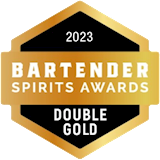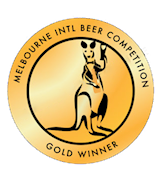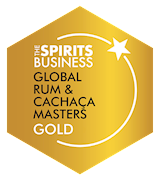Best Indonesian Alcoholic Beverage Types
Arrack is a generic term used for a variety of distilled spirits that are often unrelated and can be made from different ingredients. They are found throughout East Indies—predominantly India, Sri Lanka, Indonesia, and the Philippines.
The two dominant varieties include Ceylon arrack that is distilled from fermented juice of the coconut palm and Batavian arrack that is made from molasses. The origin of arrack is vague, and though it cannot be precisely stated when and where it was exactly invented, some of the oldest references date back to the 15th century.
VARIATIONS OF Arak
Brem is a traditional Indonesian fermented rice wine originating from Bali and Java. It is made from glutinous rice that is fermented using a special yeast culture called ragi tape. The fermentation process converts the rice starches into sugar and then into alcohol, resulting in a sweet, slightly tangy alcoholic beverage.
There are two main types of brem: liquid brem from Bali, which is a reddish or white rice wine with an alcohol content of around 5-14% ABV, and solid brem from Java, which is a fermented rice cake that is dried and eaten as a snack with a sweet and slightly sour taste.
MAIN INGREDIENTS
Arak Attack is a popular cocktail from Bali, known for its vibrant color and tropical flavor. It's based on arak, a traditional Balinese spirit distilled from fermented rice or palm sap, which has a potent flavor and high alcohol content. Arak Attack typically combines arak with orange juice and a splash of grenadine juice for sweetness and color.
The result is a refreshing, fruity cocktail that captures the essence of Bali's tropical atmosphere. The grenadine adds a layer of sweetness and creates a striking layered effect in the drink, with its deep red color contrasting with the lighter hues of the mixed juices and arak.
Bali arrack is a traditional Balinese alcoholic beverage made from the fermentation and distillation of palm sap (or palm wine). The production process of Bali arrack involves collecting the sap from palm flowers, which is then fermented and distilled to produce a clear to slightly amber-colored liquor.
This spirit has a strong, distinct flavor and a high alcohol content, often consumed in social gatherings, religious ceremonies, and used in traditional medicine. Bali arrack is noteworthy for its traditional artisanal production methods, which can vary from one producer to another, leading to a wide range of flavors and potencies.
Batavia arrack hails from Java, and it is produced from sugarcane molasses, red rice cakes, and occasionally small amounts of toddy—fermented palm juice. Often compared to rum, the drink is quite potent with herbaceous, nutty, smoky, and subtly spicy flavors and aromas.
The exact time when Batavia arrack originated is not known, but it has long been in existence before the Dutch settled East India Company on Java—which makes arrack one of the oldest distillates in the world, and a predecessor to all new world spirits such as gin, whisky, or brandy.
Swansrai is a traditional alcoholic beverage from Papua, Indonesia, made by fermenting mature coconut water over an extended period. This fermentation process results in a drink with an alcohol content ranging from 20% to 30%. Swansrai is characterized by a slightly bitter taste, a strong aroma, and a warm sensation in the throat when consumed.
It holds cultural significance among the Papuan people and is often served in a split coconut shell during important ceremonies and social gatherings.
Sopi is a traditional distilled alcoholic beverage from East Nusa Tenggara (NTT), Indonesia, particularly popular among the Timorese and other indigenous communities in the region. It is made from the fermented sap of the lontar palm tree (Borassus flabellifer), similar to other palm-based liquors found across Southeast Asia.
The process of making sopi starts with tapping the sap from the lontar palm, which is collected in bamboo containers. The fresh sap, known as nira, naturally ferments due to the presence of wild yeast, creating a mild alcoholic beverage. To increase its potency, the fermented liquid undergoes distillation, resulting in a strong, clear liquor with an alcohol content that can range between 30% and 50% ABV, depending on the distillation process.
Tua Sabu is a traditional alcoholic beverage from Sabu Island, located in East Nusa Tenggara, Indonesia. It is a type of palm wine made from the fermented sap of the lontar palm tree (Borassus flabellifer). The drink is deeply embedded in the culture of the Sabu-Raijua people, often consumed during social gatherings, traditional ceremonies, and religious rituals.
The production process begins by tapping the sap from the lontar palm tree, which is collected in bamboo containers. The fresh sap, known as "nira", has a naturally sweet taste and a low alcohol content. However, after fermentation, it becomes tua Sabu, developing a stronger, slightly sour, and mildly effervescent character.
MAIN INGREDIENTS
Arak Madu is a popular cocktail in Bali, particularly in Bali, that combines arak, a traditional Balinese spirit made from distilled rice or palm sap, with honey and lime juice.
The honey adds sweetness to counterbalance the strong, potent flavor of the arak, while the lime juice provides a tangy, refreshing citrus note, creating a well-rounded and enjoyable drink. The preparation of Arak Madu is straightforward: arak is mixed with a generous amount of honey to taste, then diluted with water or ice and finished with a squeeze of fresh lime juice.
Best Indonesian Alcoholic Beverage Producers
AWARDS

Bartender Spirits Awards - Double Gold
2023

World Liqueur Awards - Country Winner
2024

World Gin Awards - Country Winner
2022
BEST Spice Islands Distilling Spirits
AWARDS

Melbourne International Beer Competition - Gold
2018

Untappd - 2.9
BEST BINTANG PILSNER BEER Beers
Best Indonesian Alcoholic Beverages
AWARDS

World Liqueur Awards - Country Winner
2024
AWARDS

Bartender Spirits Awards - Double Gold
2023
AWARDS

World Gin Awards - Country Winner
2022
AWARDS

The Rum & Cachaça Masters - Gold
2023
AWARDS

Melbourne International Beer Competition - Gold
2018

Untappd - 2.9
AWARDS

Asia Wine Trophy - Grand Gold
2018
TasteAtlas food rankings are based on the ratings of the TasteAtlas audience, with a series of mechanisms that recognize real users and that ignore bot, nationalist or local patriotic ratings, and give additional value to the ratings of users that the system recognizes as knowledgeable. TasteAtlas Rankings should not be seen as the final global conclusion about food. Their purpose is to promote excellent local foods, instill pride in traditional dishes, and arouse curiosity about dishes you haven’t tried.





